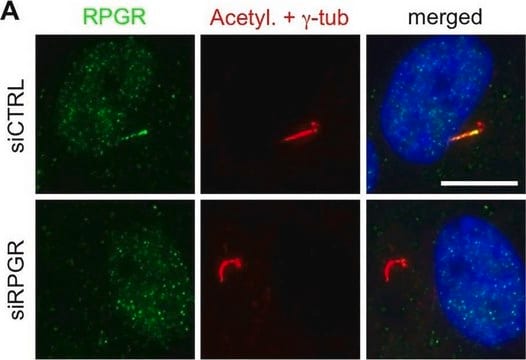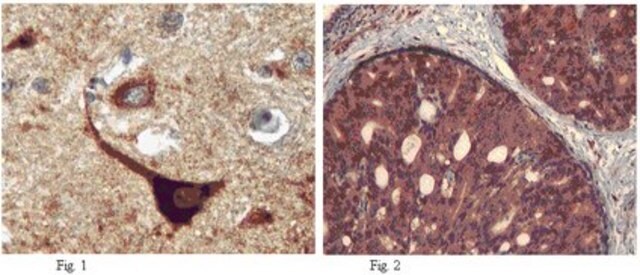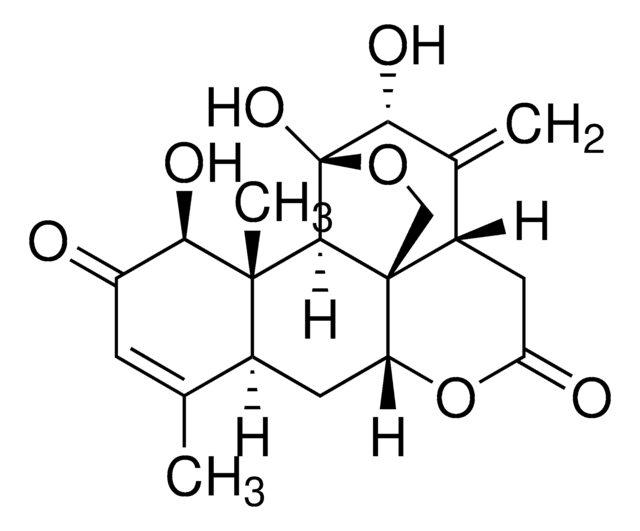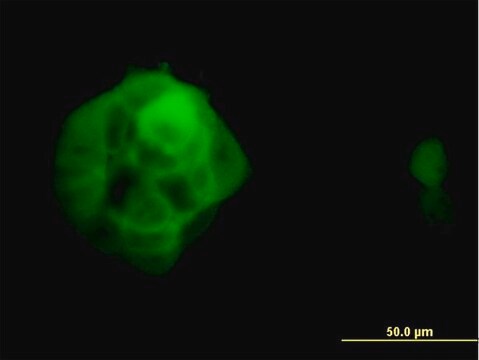This antibody has not been tested in zebrafish. No unpublished data is available.
ABN1686
Anti-Rootletin
from chicken, purified by affinity chromatography
Sinônimo(s):
Ciliary rootlet coiled-coil protein
About This Item
Produtos recomendados
fonte biológica
chicken
Nível de qualidade
forma do anticorpo
affinity isolated antibody
tipo de produto de anticorpo
primary antibodies
clone
polyclonal
purificado por
affinity chromatography
reatividade de espécies
human, porcine, mouse
técnica(s)
western blot: suitable
Isotipo
IgY
nº de adesão NCBI
nº de adesão UniProt
Condições de expedição
ambient
modificação pós-traducional do alvo
unmodified
Informações sobre genes
mouse ... Crocc(230872)
Descrição geral
Especificidade
Imunogênio
Aplicação
Neuroscience
Immunohistochemistry Analysis: A representative lot detected Rootletin in Immunohistochemistry applications (Yang, J., et. al. (2002). J Cell Biol. 159(3):431-40; Sun, X., etl al. (2016). Proc Natl Acad Sci USA. 113(21):E2925-34; Yadav, S.P., et. al. (2016). Development. 143(9):1491-501; Pawlyk, B.S., et. al. (2016). Gene Ther. 23(2):196-204; Sun X., et. al. (2012). Cilia. 1(1):21; Liu, X., et. al. (2007). Proc Antl Acad Sci USA. 104(11):4413-8; Bahe, S., et. al. (2005). J Cell Biol. 171(1):27-33; Yang, J., et. al. (2005). Mol Cell Biol. 25(10):4129-37; Hong, D.H, et. al. (2003). Invest Ophthalmol Vis Sci. 44(6):2413-21).
Qualidade
Western Blotting Analysis: A 1,000 dilution of this antibody detected Rootletin in 10 µg of mouse retina tissue lysate.
Descrição-alvo
forma física
Armazenamento e estabilidade
Handling Recommendations: Upon receipt and prior to removing the cap, centrifuge the vial and gently mix the solution. Aliquot into microcentrifuge tubes and store at -20°C. Avoid repeated freeze/thaw cycles, which may damage IgG and affect product performance.
Outras notas
Exoneração de responsabilidade
Não está encontrando o produto certo?
Experimente o nosso Ferramenta de seleção de produtos.
Código de classe de armazenamento
10 - Combustible liquids
Classe de risco de água (WGK)
WGK 2
Certificados de análise (COA)
Busque Certificados de análise (COA) digitando o Número do Lote do produto. Os números de lote e remessa podem ser encontrados no rótulo de um produto após a palavra “Lot” ou “Batch”.
Já possui este produto?
Encontre a documentação dos produtos que você adquiriu recentemente na biblioteca de documentos.
-
Has ABN1686 been tested on zebrafish? Do you have any unpublished data?"
1 answer-
Helpful?
-
Active Filters
Nossa equipe de cientistas tem experiência em todas as áreas de pesquisa, incluindo Life Sciences, ciência de materiais, síntese química, cromatografia, química analítica e muitas outras.
Entre em contato com a assistência técnica